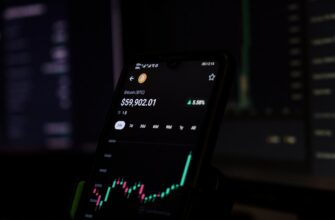What is a USD-Pegged Cryptocurrency?
A USD-pegged cryptocurrency, commonly called a stablecoin, is a digital asset designed to maintain a 1:1 value ratio with the US dollar. Unlike volatile cryptocurrencies like Bitcoin, these tokens leverage reserve assets (cash, bonds, or other cryptocurrencies) to minimize price fluctuations. They serve as a bridge between traditional finance and crypto ecosystems, enabling users to transact, trade, and store value without exposure to market turbulence. Major examples include Tether (USDT) and USD Coin (USDC), which collectively represent over $100 billion in market value.
How USD-Pegged Cryptocurrencies Maintain Stability
Stablecoins achieve dollar parity through three primary mechanisms:
- Fiat Collateralization: Reserves of USD cash or cash equivalents (like Treasury bills) held by regulated entities back each token. Regular audits ensure transparency.
- Crypto Over-Collateralization: Projects like MakerDAO’s DAI lock cryptocurrency assets (e.g., ETH) worth more than the stablecoins issued to absorb market swings.
- Algorithmic Control: Smart contracts automatically adjust token supply based on demand—burning tokens when price falls below $1 or minting new ones when it rises.
Top Benefits of USD-Pegged Cryptocurrencies
- Reduced Volatility: Ideal for merchants accepting crypto payments without price risk.
- Faster Cross-Border Transfers: Settle international transactions in minutes for fractions of traditional wire costs.
- DeFi Integration: Serve as primary liquidity in decentralized exchanges, lending protocols, and yield farming.
- Inflation Hedge: In countries with unstable local currencies, stablecoins offer dollar-denominated savings.
- Exchange Trading Pairs: Over 70% of crypto trades involve stablecoins as base pairs against assets like Bitcoin.
Leading USD-Pegged Cryptocurrencies in 2024
Notable options include:
- Tether (USDT): Market leader with $110B+ capitalization. Backed by cash, bonds, and other assets.
- USD Coin (USDC): Fully reserved by Circle and Coinbase. Prioritizes regulatory compliance.
- Dai (DAI): Decentralized stablecoin backed by crypto collateral. Maintains stability via smart contracts.
- Binance USD (BUSD): Regulated by NYDFS. Offers low-fee trading on Binance.
- Pax Dollar (USDP): Audited monthly with 1:1 cash reserves.
Key Risks and Considerations
While stablecoins reduce volatility, they carry unique risks:
- Reserve Transparency: Some issuers face scrutiny over audit quality and reserve composition.
- Regulatory Uncertainty: Governments may impose new rules affecting issuance or redemption.
- Depegging Events: Temporary loss of dollar parity can occur during market stress (e.g., USDC dipped to $0.87 during 2023 banking crisis).
- Custodial Risk: Centralized issuers could freeze funds or face operational failures.
Practical Uses for USD-Pegged Cryptocurrencies
Leverage stablecoins for:
- Trading: Park profits during market downturns without exiting crypto.
- Remittances: Send money globally with fees under 1%.
- Earning Yield: Lend via DeFi platforms for 3-8% APY rewards.
- Payments: Use crypto debit cards like Coinbase Card for daily spending.
- Business Operations: Pay international contractors or suppliers instantly.
Frequently Asked Questions
Q: Are USD-pegged cryptocurrencies legal?
A: Most comply with regional regulations, but laws vary. USDC and BUSD operate under US oversight, while others face evolving frameworks.
Q: How do I buy USD-pegged crypto?
A: Purchase via exchanges (Coinbase, Binance) using fiat currency or swap other cryptos. Store in non-custodial wallets like MetaMask for security.
Q: Can stablecoins lose their peg permanently?
A: Rare, but possible if reserves prove inadequate. Choose transparent, audited projects to mitigate risk.
Q: Do stablecoins generate interest?
A: Yes—through DeFi lending (Aave, Compound) or exchange savings programs, often yielding higher returns than banks.
Q: What’s the difference between USDT and USDC?
A: USDT has broader adoption but faced reserve controversies. USDC emphasizes regulatory compliance and asset transparency.








